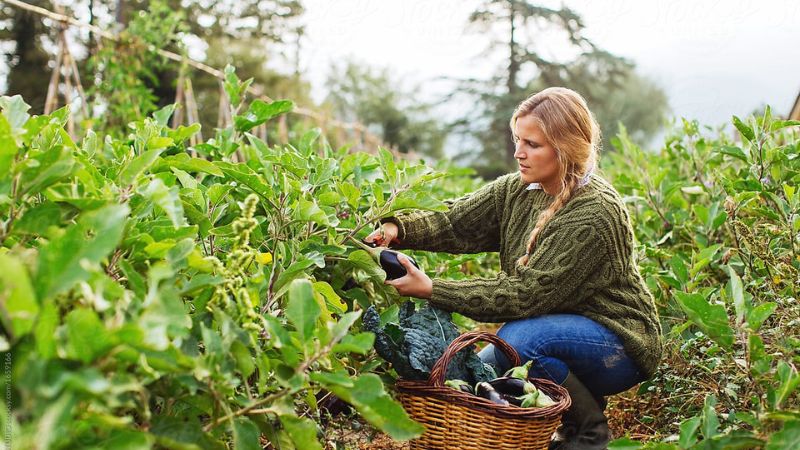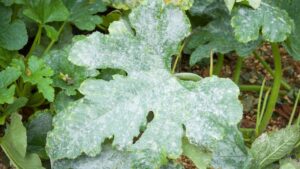Discover the secrets to maximizing the freshness and longevity of your organic produce with our comprehensive guide. Harvesting and storing organic fruits and vegetables properly not only ensures their optimal flavor and nutrition but also reduces waste and saves you money. In this article, we’ll unveil 7 Tips For Harvesting And Storing Organic Produce Properly. From the moment your crops reach peak ripeness to the methods of storing them for extended use, we’ve got you covered. Whether you’re a seasoned gardener or just starting out, these insights will empower you to enjoy the bounty of your harvest for weeks to come. Get ready to elevate your culinary creations with vibrant, flavorful organic ingredients that are as nutritious as they are delicious.
7 Tips For Harvesting And Storing Organic Produce Properly
1. Timing Is Key for Harvesting
Timing plays a crucial role in harvesting organic produce. It’s essential to pick fruits and vegetables at the peak of ripeness to ensure maximum flavor and nutritional content. For most crops, this means harvesting them when they are fully mature but not overripe. Keep a close eye on your plants and observe the recommended harvesting times for each type of produce. While waiting too long can result in overripeness and quality loss, harvesting too early can provide flavors and textures that are undeveloped.
Also Read: 7 Best Organic Fertilizers For Vegetable Gardens
2. Handle With Care
Handle your organic produce with care to minimize damage and prolong its shelf life. Use sharp, clean tools such as pruners or scissors to harvest fruits and vegetables, as dull or dirty tools can cause bruising and introduce pathogens. When harvesting delicate items like berries or leafy greens, gently pluck them from the plant to avoid crushing or tearing. Be mindful of how you handle produce during and after harvest, as rough handling can lead to bruising and spoilage.
3. Proper Cleaning and Preparation
After harvesting, it’s crucial to clean and prepare your organic produce properly before storage. For the purpose of getting rid of any dirt, debris, or pesticide residue, rinse fruits and vegetables under cool running water. For firmer produce like root vegetables, use a vegetable brush to scrub away stubborn dirt. Avoid soaking produce for extended periods, as this can lead to waterlogging and accelerate spoilage. Once cleaned, allow the produce to air dry or gently pat it dry with a clean towel before storing.
4. Optimal Storage Conditions
Creating the right storage conditions is essential for preserving the freshness and quality of organic produce. Most fruits and vegetables thrive in cool, dark, and well-ventilated environments. Store items like tomatoes, cucumbers, and peppers at room temperature away from direct sunlight to maintain their flavor and texture. Leafy greens and herbs benefit from being stored in the refrigerator’s crisper drawer, where humidity levels can be adjusted to prevent wilting. Root vegetables such as carrots and potatoes should be stored in a cool, dark place with good air circulation to prevent sprouting and spoilage.
5. Utilize Proper Containers
Choosing the right containers for storing organic produce can make a significant difference in its longevity. Perforated plastic bags or breathable containers are ideal for storing fruits and vegetables in the refrigerator, as they allow for proper airflow while preventing moisture buildup. Avoid storing produce in airtight containers or plastic bags without ventilation, as this can promote mold and bacterial growth. Glass containers or reusable storage bags are excellent alternatives to plastic for reducing waste and minimizing chemical leaching.
6. Regularly Check and Rotate
To ensure the freshness of your organic produce, make it a habit to regularly check stored items for any signs of spoilage or decay. Remove any damaged or moldy pieces promptly to prevent them from contaminating the rest of the batch. Additionally, practice proper rotation by using older produce first and placing newly harvested items at the back of the storage area. This helps prevent food waste and ensures that you’re always using the freshest ingredients in your meals.
7. Embrace Preservation Methods
Extend the shelf life of your organic produce by embracing various preservation methods such as freezing, canning, or drying. Freezing is an excellent option for preserving fruits and vegetables like berries, peas, and corn, as it locks in their freshness and flavor. Canning is ideal for items like tomatoes, beans, and pickles, allowing you to enjoy them throughout the year. Drying herbs, peppers, and fruits is a simple yet effective way to preserve their flavor and aroma for future use. Experiment with different preservation techniques to find the ones that best suit your needs and preferences.
Also Read: How To Compost Effectively For Organic Gardening – 9 Tips
Conclusion
Harvesting and storing organic produce properly is not only essential for preserving its freshness and flavor but also for maximizing its nutritional value and reducing food waste. By following the seven tips outlined in this guide, you can ensure that your homegrown or locally sourced fruits and vegetables remain in peak condition for longer periods. From timing your harvests and handling produce with care to creating optimal storage conditions and embracing preservation methods, each step plays a crucial role in maintaining the quality of your organic bounty. With a little attention to detail and some thoughtful planning, you can enjoy the delicious taste and wholesome goodness of organic produce throughout the year. So, roll up your sleeves, put these tips into action, and savor the fruits of your labor for months to come. Happy harvesting and storing!
FAQs
How do I know when my organic produce is ready for harvest?
Watch for signs like color, texture, and scent, and consult specific harvest guidelines for each type of produce. Generally, ripe fruits and vegetables will be firm yet yield slightly to pressure and exhibit vibrant color and aroma.
What are the best storage methods for organic produce?
Opt for breathable containers or perforated plastic bags to maintain airflow while storing produce in the refrigerator. Additionally, consider utilizing root cellars, cool basements, or pantry shelves for items that don’t require refrigeration, such as potatoes, onions, and winter squash. Regularly check stored produce for any signs of spoilage and promptly remove any affected items to prevent them from affecting the rest.




